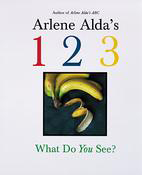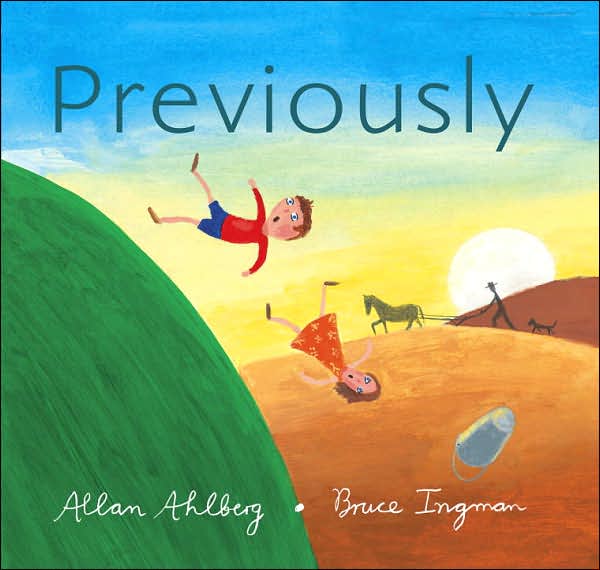I’m still trecking (slowly) through my public library’s children’s picture books–mixing together my read every book goal with Carrie at Reading my Library‘s personal challenge.
Carrie is moving much more quickly than I–her last count had her at 558 picture books read (Wow!) and partway through the “B” section. In my defense, I don’t have any toddlers to read for–and I’m a full-time graduate student and teaching assistant.

My last trip to the library gave me a modge-podge of books. The library had only one title per author for most of the authors in this trip–and I could find no discernible theme in what I found, except of course, that the author’s last names all began with the letters A and L.

The Butter Man by Elizabeth Alalou and Ali Alalou (illustrated by Julie Klear Essakalli) has a story-inside-a-story narrative. The young narrator is impatiently waiting for the couscous her baba (father) is cooking to be done. When she complains that she’s starving, her father begins telling her the story of himself, as a young boy in Morocco during a drought, waiting for the butter man. He and his family were hungry. There was no butter to dip their bread in. What’s more, the pieces of bread grew smaller and smaller with each day. To keep her son’s mind off the hunger–and to make the bread last longer–baba‘s mother tells him to sit by the road each day and wait for the butter man, who perhaps might give him some butter for his bread. If he ate the bread too soon, he would not have any butter to dip in the bread should the butter man come. So he waits each day with each day’s portion of bread, until the hunger is unbearable and he eats it without butter. Until one day, when he sees a man coming down the road. It’s not the butter man, but it’s even better.
I enjoyed this book. It’s a bit more text-heavy than the picture books intended for toddlers–it’s probably more suitable for slightly older children. But the cross-cultural story is engaging. The authors subtly contrast the waiting the narrator experiences–waiting for dinner to be done–with the waiting her father experienced in Morocco during a famine. The book gently encourages children to be patient–and to be thankful for what they have–without ever once mentioning a “moral”.

Louella Mae, She’s Run Away!, written by Karen Beaumont Alarcon and illustrated by Rosanne Litzinger, tells the story of a great search underway for Louella Mae, who has apparently run away. The story is told in lilting rhyme, with one stanza per layout. What makes this book unique and special, though, is that the last word of each stanza is left out, only to be revealed in the next page–allowing the reader to try to guess where the family will next search for Louella Mae. For example, one rhyme is…
“Round up the horses!
Hitch up the team!
Hop in the buckboard
and look by the…”
The next layout fills in the missing word “stream.” I enjoyed guessing at what location will be search next, and had a delightful surprise when Louella Mae turned out to be–well I won’t tell you what she turned out to be. You’ll just have to read the book!
 I recognize the value of counting books, but I generally tend to hate them. I find them simplistic and boring. I mean, how many times can you handle “Two Birds”, new layout “Three Ladybugs”, new layout “Four Caterpillars”. Ughh!
I recognize the value of counting books, but I generally tend to hate them. I find them simplistic and boring. I mean, how many times can you handle “Two Birds”, new layout “Three Ladybugs”, new layout “Four Caterpillars”. Ughh!
So I wasn’t too excited when I found a counting book amongst my latest library pile. But I was pleasantly surprised. Ten Little Wishes: A Baby Animal Counting Book by Andrea Alban Gosline is NOT your typical counting book. Ten Little Wishes has a family taking their new baby on a walk through the countryside, taking a look at all the baby animals about and saying a wish for the baby at each stop. The family meets a doe and her 1 little fawn, a couple of mares and their 2 little foals… Each layout introduces a number, an animal, and the correct names for the adult and baby version of each animal.
All of this is done in sweet rhyme–
Around the corner, what a surprise!
10 new puppies with sleepy eyes.
A litter for Mama to cuddle and tend,
born before my story ends.
May baby make some special friends.
This book is definitely a keeper!
As a sidenote, the illustrations done by Lisa Burnett Bossi add an additional dimension to this book. I enjoy them as illustrations alone, but I especially enjoyed that they portrayed the father holding baby in a sling and mom and daughter wearing dresses. It’s a bit fun to see a little old-fashioned-ness in such a new book!












